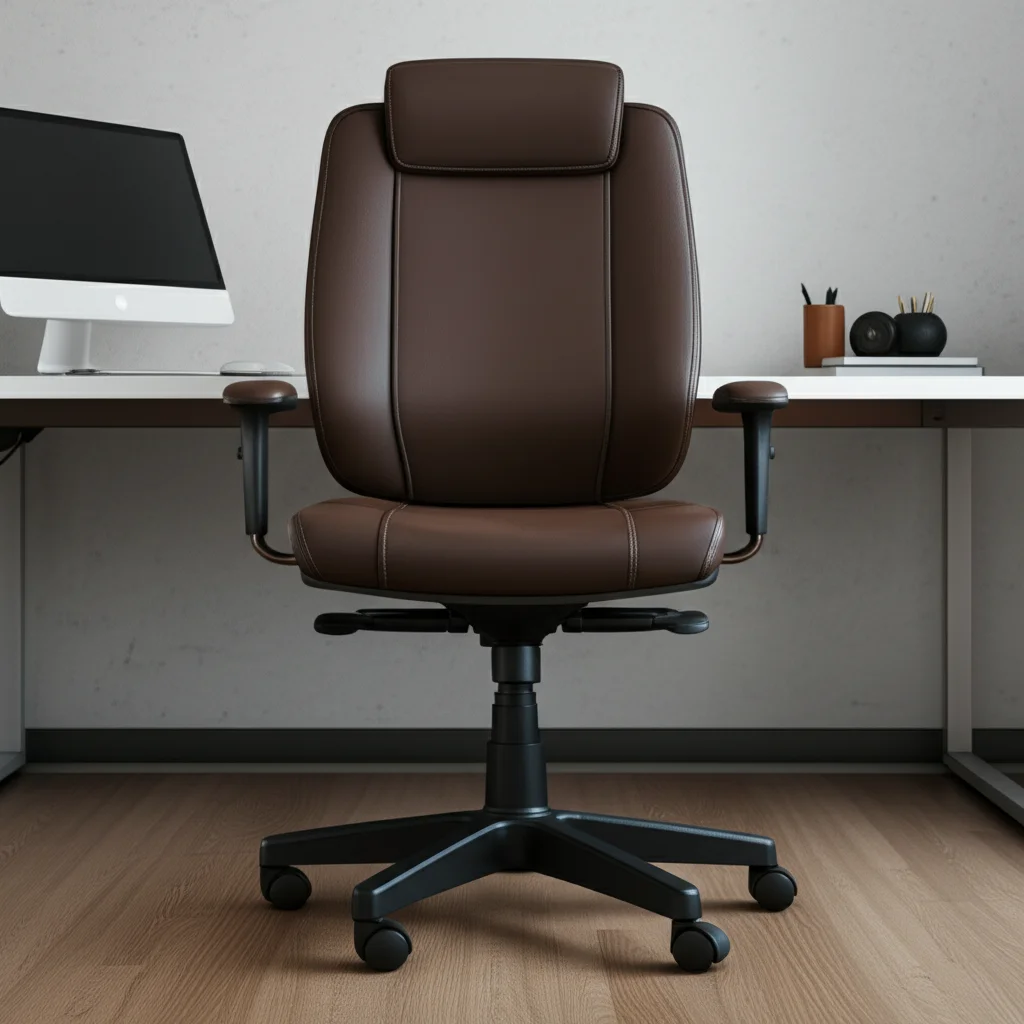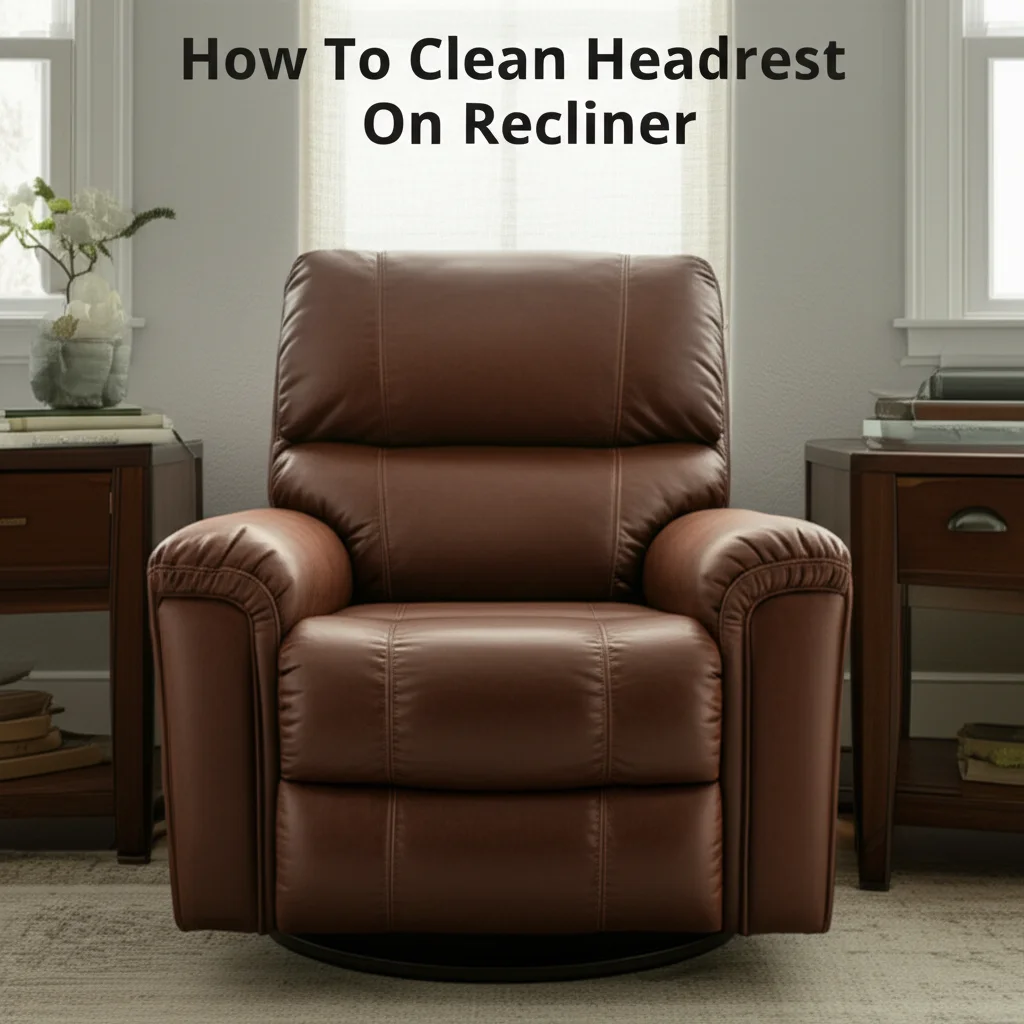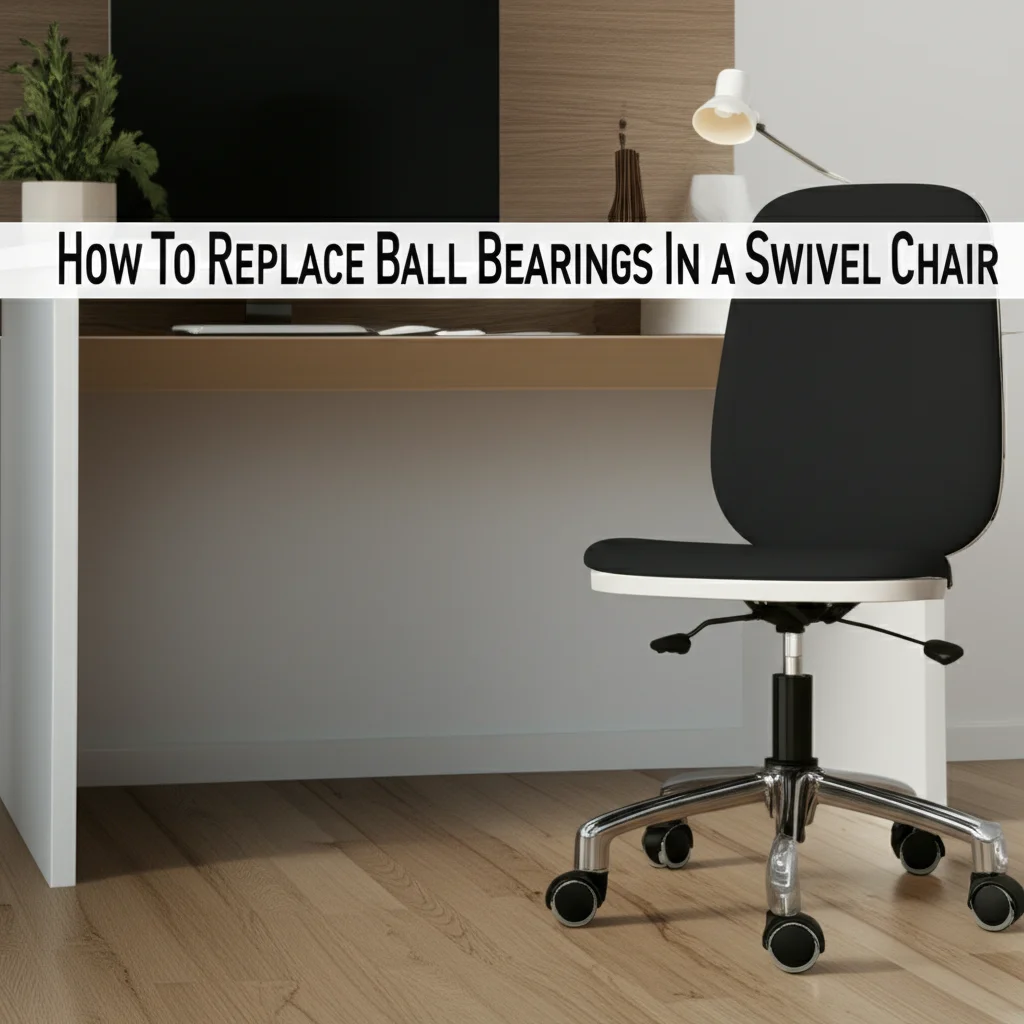· Todd Martin · Office Chair Repair · 11 min read
How To Fix Tilt Lock On Office Chair

Fix Your Office Chair’s Tilt Lock: A Complete Guide
A comfortable office chair makes a big difference in your daily work. We spend many hours sitting, so our chairs must support us well. When the tilt lock on your office chair stops working, it causes discomfort. Your back may not get the support it needs. This problem can lead to poor posture and reduced productivity. I know how frustrating a stuck or broken tilt mechanism can be.
This guide will show you how to fix tilt lock on office chair problems. We will explore common reasons why tilt locks fail. You will learn simple diagnostic steps and practical solutions. We cover everything from basic adjustments to lubrication and component replacement. By the end, you can restore your chair’s full function. You will enjoy a more comfortable and supportive sitting experience.
Takeaway
- Check the tilt lever and tension knob first for simple adjustments.
- Inspect the mechanism for physical obstructions or loose components.
- Lubricate moving parts with a suitable spray to reduce friction.
- Consider replacing damaged components if basic fixes do not work.
- Regular maintenance prevents common tilt lock issues.
Clear Answer to Main Query
To fix a tilt lock on an office chair, first, ensure the tilt lever is fully engaged or disengaged. Adjust the tension knob to loosen or tighten the tilt. Inspect the mechanism under the seat for obstructions, loose screws, or a disconnected cable. Lubricate moving parts with a silicone spray to improve function. If parts are damaged, consider replacement.
Understanding Your Office Chair’s Tilt Mechanism
Many people do not think about how their office chair works until something breaks. The tilt mechanism is a key part of an ergonomic chair. It allows you to lean back and relax, or sit upright for focused work. The tilt lock holds the chair at a chosen angle. It keeps you stable in your desired position. A separate tilt tension knob controls how easily the chair reclines. This knob lets you customize the recline resistance to your weight.
Office chairs use different tilt types. A “center-tilt” chair pivots from the center of the seat. A “knee-tilt” chair pivots from closer to the front, keeping your feet on the floor. A “synchro-tilt” chair reclines the backrest more than the seat, opening up your hip angle. Each type uses a lever and a spring-loaded system to manage the tilt. These parts work together to give you flexible seating. Understanding these basics helps you troubleshoot problems effectively.
Initial Troubleshooting: Basic Checks for a Stuck Tilt Lock
When your office chair’s tilt lock stops working, do not panic. Many issues have simple solutions. We always start with the easiest fixes. First, check the tilt lock lever itself. Is it in the correct position? Sometimes, it just needs a firm push or pull to fully engage or disengage. Ensure it moves through its full range of motion.
Next, look at the tilt tension knob. This knob often sits under the seat, near the front. If it is too tight, the chair may not tilt at all. If it is too loose, the chair might recline too easily or not lock firmly. Try turning the knob counter-clockwise to loosen the tension completely. Then, turn it clockwise to gradually increase the tension until you find your desired resistance. Sometimes, this simple adjustment fixes the problem.
Finally, inspect for obstructions under the chair. Loose fabric, dust bunnies, or even small dropped items can jam the mechanism. Look closely at the springs and levers under the seat. Use a flashlight if needed. Clear away any visible debris. A clean chair operates better. You can learn more about general chair hygiene by reading about how to clean office chair wheels. Removing dirt and dust from these areas can prevent many common issues.
Addressing a Loose or Disconnected Tilt Lock Cable/Lever
Many modern office chairs use a cable system for their tilt lock. This cable connects the visible lever to the internal tilt mechanism. If your tilt lever feels loose, or if it moves without affecting the chair’s tilt, the cable might be disconnected or stretched. This is a common problem. It is usually easy to fix.
First, flip your chair over or tilt it back so you can see the underside. Locate the tilt mechanism assembly. The cable usually runs from the lever handle to a small attachment point on this mechanism. Check if the end of the cable is still clipped into place. Sometimes, it simply pops out. Reattaching it often solves the issue. Use pliers if the clip is stiff.
Also, check the screws that hold the tilt lever in place. These screws can loosen over time with regular use. A loose lever will not operate the cable effectively. Use a screwdriver to tighten any loose screws. If you find a screw hole is stripped, this makes the screw unable to hold tight. You can find helpful advice on how to fix stripped screw hole in wood chair, which can be adapted for metal parts with a larger screw or thread repair kit. Ensure all connections are secure for proper function.
Lubricating the Tilt Mechanism for Smooth Operation
Friction and grime are major enemies of smooth chair operation. Over time, dust, hair, and general debris build up inside the tilt mechanism. This buildup causes parts to stick or move with difficulty. Lubrication helps moving parts glide smoothly. It also protects components from wear. Choosing the right lubricant is important. I recommend using a silicone spray or a dry lubricant. These types do not attract dust like oil-based lubricants do. Avoid using WD-40, as it can attract more dirt over time.
To lubricate, first, clean the area around the mechanism. You can use a brush or compressed air to remove loose debris. For overall chair cleanliness, consider learning how to clean fabric office chair to keep your entire workspace tidy. Once clean, spray the lubricant onto all moving parts of the tilt mechanism. Focus on the pivot points, springs, and where the lever connects. Move the tilt lever and tension knob back and forth several times. This action helps the lubricant spread evenly into all the joints and gears. Repeat the lubrication process every few months for best results. This simple step can greatly extend your chair’s life.
Dealing with Damaged or Worn Tilt Components
Sometimes, the problem is more than just dirt or a loose cable. Mechanical parts can break or wear out. You might find a bent lever, a broken spring, or worn gears within the tilt mechanism. These issues prevent the chair from locking or tilting correctly. Inspect the entire mechanism carefully. Look for visible cracks, bends, or missing pieces. A broken spring will make the chair feel “floppy” or unable to hold its position. Worn teeth on gears can prevent the lock from engaging.
If you identify damaged parts, you have a few options. For minor issues like a bent lever, you might be able to gently bend it back into shape using pliers. Be careful not to apply too much force, as you could break it entirely. For more significant damage, replacement parts may be needed. Many office chairs use standard tilt mechanisms. You might find replacements online by searching for “universal office chair tilt mechanism.” Before ordering, measure your current mechanism’s dimensions. Take photos of the connections and mounting holes.
Replacing the entire mechanism can be a DIY project. It usually involves unbolting the old unit from the bottom of the seat. Then, you bolt the new one in its place. This requires some basic tools like wrenches and screwdrivers. While a tilt mechanism replacement is a specific repair, understanding other chair repairs, like how to replace ball bearings in a swivel chair, shows the level of mechanical work involved. Always ensure the new part fits your chair model exactly for safe and proper function.
Professional Help and When to Replace Your Chair
There are times when a DIY fix might not be enough. If you have tried all the troubleshooting steps and your office chair’s tilt lock still does not work, you might need professional help. Some complex mechanisms or very old chairs may require specialized tools or expertise. A local furniture repair shop might be able to diagnose and fix the issue. They often have access to specific parts or can fabricate solutions. This option can save you from buying a whole new chair.
However, consider the cost of repair versus replacement. If the repair cost is high, or if other parts of your chair are also failing, it might be more economical to get a new one. Look at the overall condition of your chair. Is the upholstery worn out? Are the casters breaking? Does the gas lift cylinder no longer hold its height? If multiple components are failing, your chair may have reached the end of its lifespan. Investing in a new, high-quality ergonomic chair can be a better long-term solution for your comfort and health. Modern chairs offer advanced features that might improve your sitting experience even further.
Maintaining Your Office Chair to Prevent Future Tilt Lock Issues
Regular maintenance is key to a long-lasting office chair. Taking a few simple steps can prevent future tilt lock problems. First, keep your chair clean. Dust and debris are the main culprits behind sticking mechanisms. Regularly wipe down the chair’s base and underside. You can use a compressed air can to blow out dust from the crevices of the tilt mechanism. This prevents buildup.
Second, apply lubricant periodically. Every six to twelve months, spray a silicone-based lubricant onto the moving parts of your tilt mechanism. This reduces friction and ensures smooth operation. Make sure to work the lever and tension knob after applying the spray. This helps the lubricant spread evenly. Do not over-lubricate, as this can attract more dust.
Third, use your chair correctly. Avoid forcing the tilt lock or tension knob. If they feel stiff, do not push harder. Instead, stop and inspect for issues. Ensure you do not exceed the chair’s weight limit. Overloading a chair puts undue stress on all its components, including the tilt mechanism. Following these simple maintenance tips will keep your office chair in top working condition. You will avoid frustrating tilt lock issues and enjoy comfortable seating for years.
FAQ Section
Q1: Why won’t my office chair recline?
Your office chair might not recline due to a few reasons. The tilt lock could be engaged. The tilt tension knob might be too tight. There could also be debris jamming the mechanism. Or, the internal spring or cable might be broken or disconnected. Check these points first.
Q2: Can I fix a broken office chair tilt mechanism?
Yes, you can often fix a broken office chair tilt mechanism. Simple issues like disconnected cables or tight tension knobs are easy DIY fixes. For more complex problems like broken springs or worn gears, you might need to order replacement parts. Accessing the mechanism requires basic tools.
Q3: What lubricant should I use for my chair’s tilt?
Use a silicone-based spray lubricant or a dry lubricant for your chair’s tilt mechanism. These types do not attract dust and grime like oil-based lubricants. Avoid using general-purpose oils that can make the problem worse over time by collecting more dirt.
Q4: How do I adjust the tilt tension on my office chair?
Locate the large, round knob usually found under the seat, at the front. Turn this knob clockwise to increase tilt tension, making it harder to recline. Turn it counter-clockwise to decrease tension, allowing easier reclining. Adjust it until it feels comfortable for your body weight.
Q5: Is it worth repairing an old office chair tilt lock?
Deciding whether to repair or replace depends on the chair’s overall condition and the repair cost. If the chair is otherwise sturdy and comfortable, a simple tilt lock repair is often worthwhile. If multiple parts are failing, or the repair is expensive, buying a new chair might be better.
Q6: How often should I maintain my office chair’s tilt mechanism?
You should maintain your office chair’s tilt mechanism at least once every six to twelve months. This involves cleaning away dust and debris. It also means applying a silicone-based lubricant to the moving parts. Regular checks prevent issues before they become major problems.
Conclusion
A fully functional office chair is important for your comfort and productivity. A broken tilt lock can quickly turn a productive day into a frustrating one. You now have the knowledge to fix tilt lock on office chair problems. We covered everything from basic checks to replacing damaged parts. Remember, simple steps like checking the lever, adjusting the tension, and lubricating can often resolve the issue. If the problem is more complex, you can tackle cable fixes or even full mechanism replacements.
Do not let a stuck tilt lock affect your work or well-being. Take action using the steps outlined in this guide. Regular maintenance will keep your chair in top condition for years to come. Your back and your productivity will thank you. Get your office chair working perfectly again. Enjoy the comfort and support you deserve.





